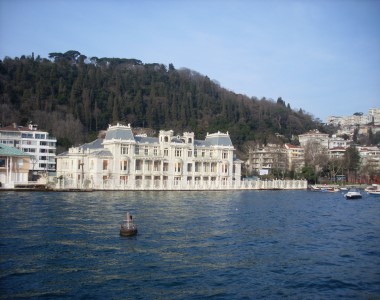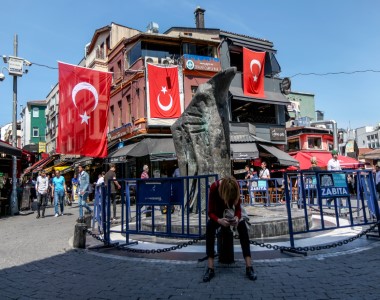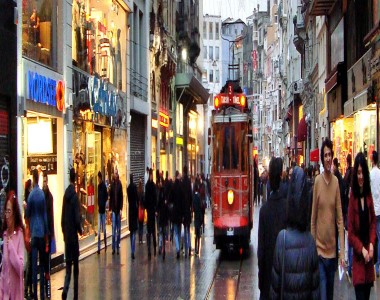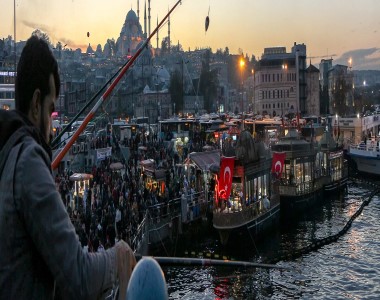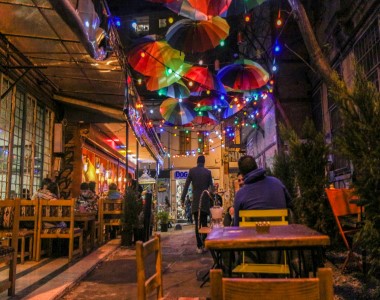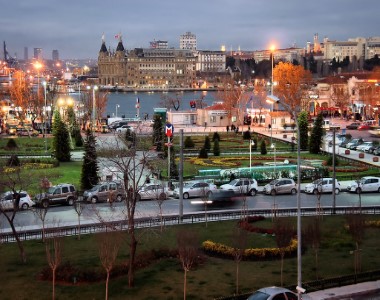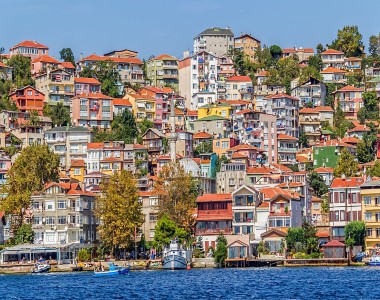Eyüp
Spreading from the corner of the Golden Horn, to the shores of the Black Sea to the north, Eyüp is a district of Istanbul that is amongst the most conservative ones, even though the area was populated by a vast number of refugees from the Balkans during the 18th century.
The significance of this district lies in the neighborhood of the same name, located in the place where the streams of Kagithane and Alibey meet. A village has bee located here since the Byzantine era, with the fresh streams providing a constant supply of water, with a fortified monastery hosting Godfrey of Bouillon and his army during the First Crusade. It was also an ancient place of burial, before, and especially after, the Ottoman period. Later, the place became the location of the first settlement by the Ottoman Turks, after the fall of Constantinople.
The name of the village, neighborhood and the whole district, comes from Eyup-el-Ensari, who was a friend of Prophet Mohammed and his disciple, the standard-bearer of the Muslim Army, and a very important person in the folklore of the Islamic world. He was killed by an arrow when Arabs tried to conquer Constantinople in the 7th century, and after being buried by his friends, his resting place was unknown for centuries. Immediately after the fall of Constantinople, Fatih Sultan Mehmed discovered it, with the help of his tutor, Ak Semsettin, who instructed the sultan to build a tomb in this place, depicting a building he saw in his dream. Along with the mausoleum, the Eyüp Sultan Mosque was constructed, and this location became one of the most sacred places in the Islamic world, ranking just behind Mecca, Medina and Jerusalem.
Soon, the graveyard around the mausoleum started expanding rapidly, as everyone considered it a great honour to be buried by the holy man’s burial place. Also, the village slowly developed into an important residential area with a constant spiritual ambience around it.
One of the interesting traditions of this location became the sword girding, which signified the end of the process of taking up the role of the sultan. It was a tradition carried on from the Byzantine ages, when Byzantine emperors came to the former Monastery of this village to do the same. In the 16th century, during the reign of Sultan Suleyman, this sacred place developed further, with fountains, schools, hamams and kitchens being built, as well pavilions and mansions along the shores of the Golden Horn. With the arrival of the Industrial revolution, along with the refugees from the Balkans and the Caucasus during the 17th and 18th century, the area’s mythic atmosphere was somewhat diminished by building a number of factories on the coastline. However, the influx of residents, along with the ever-rising number of pilgrims, spurred the growth of the commercial area around the mosque and mausoleum, where arose fish and dairy markets, along with bars, shops and cafes, as well as touristic shops selling religious items to visitors.
Unfortunately, in the 20th century, the district was no longer such a pleasant residential area, due to the expansion of industry and major road-lines spanning across it, while a great deal of parks and gardens disappeared. This prompted the wealthier families to move out, leaving the area with a more working-class feel.
However, in recent decades the coastline has been cleaned up, making the area very attractive to conservative Muslim families, which finally gave the district the ambience it now has. Eyup feels different to the other modern, cosmopolitan parts of Istanbul, which makes it a fresh of breath air for most tourists.
If you are to visit this area, keep in mind that on Fridays and during religious holidays, it is very crowded due to visiting pilgrims from all over the world, as well as women praying for fertility, and boys preparing for circumcision ceremonies. Also try not to draw too much attention and be discrete in the sacred places, respecting the customs and being fully clothed, especially ladies. Also, be careful as not to disturb worshippers during prayer time.
If you have time, you should definitely climb up through the cemetery, all the way to the “Pierre Lotti” cafe on the hill. It will be an interesting walk, because of the very artistically carved tombstones, and even if you’re not interested in that kind of cultural exploration, the view will definitely not disappoint you. If you get up to the cafe, sit for a cup of tea and enjoy the panoramic view of the Golden Horn with other tourists. If you’re not up for walking, you can always take the cable car, which gets you to the top in just three minutes.
Enjoy this place of great importance to the Muslim community – the cultural difference will not leave you unmoved.
Visit Hours: The Anatolian Castle is opened daily and only outer walls can be visited.


